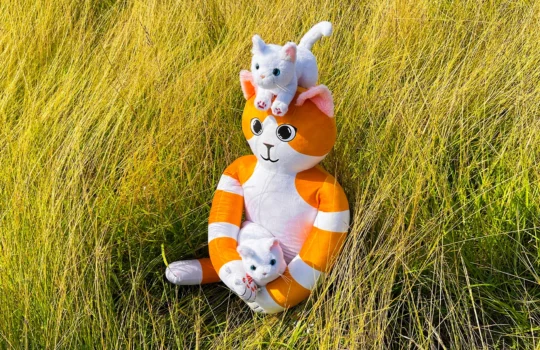Stuffed Toy vs Plush Toy vs Plushie: What’s the Diff?
In the realm of soft, huggable companions, terms like “stuffed toy,” “plush toy,” and “plushie” are often used interchangeably. However, subtle distinctions exist among them. This article delves into these differences, providing clarity for enthusiasts and collectors alike.
Understanding Stuffed Toys
A stuffed toy is a soft object, typically designed to resemble animals, fictional characters, or inanimate objects. Crafted from textiles and filled with materials like cotton, wool, or synthetic fibers, these toys have been cherished companions for generations. The concept dates back to ancient civilizations, with modern versions gaining prominence in the late 19th and early 20th centuries. Notably, the teddy bear’s creation in 1903 marked a significant milestone in the evolution of stuffed toys. Wikipedia
Defining Plush Toys
The term plush toy refers to stuffed toys made from plush fabric—a soft, luxurious textile with a long pile. Originating from the French word “peluche,” meaning “soft,” plush toys emphasize a velvety texture that enhances their tactile appeal. While all plush toys are stuffed, not all stuffed toys utilize plush fabric. This distinction underscores the importance of material choice in defining a plush toy. Must Be ToysThe Content Authority
What Is a Plushie?
A plushie is a colloquial term for a plush toy, predominantly used in informal contexts. Emerging in the late 20th century, “plushie” has become a popular descriptor among collectors and enthusiasts. The term often conveys affection and familiarity, highlighting the emotional connections people form with these soft companions.
Key Differences Among the Terms
While “stuffed toy,” “plush toy,” and “plushie” are closely related, their distinctions lie in material, formality, and usage context:
- Material: Stuffed toys encompass all soft toys filled with stuffing materials, regardless of the outer fabric. In contrast, plush toys specifically feature a plush fabric exterior, emphasizing a softer feel.
- Terminology and Usage: “Stuffed toy” is a broad, formal term applicable to all such toys. “Plush toy” narrows the focus to those made with plush fabric. “Plushie,” being informal, is often used within communities of enthusiasts and collectors.
Cultural and Regional Variations
Geographical differences influence the terminology:
- United Kingdom and Australia: The term “soft toy” is prevalent, emphasizing the toy’s texture.
- United States: “Stuffed animal” is commonly used, especially when the toy resembles an animal.
These variations highlight the diverse linguistic approaches to describing similar objects across cultures.
Evolution of Terminology
The language surrounding these toys has evolved:Must Be Toys
- Early 20th Century: “Stuffed toy” and “stuffed animal” were standard terms.
- Mid to Late 20th Century: “Plush toy” gained popularity as plush materials became more common.
- Late 20th Century Onward: “Plushie” emerged within collector communities and online forums while reflecting a more personalized connection.
Collectors’ Perspectives
For collectors, understanding these nuances is crucial:
- Material and Craftsmanship: Collectors often prioritize the quality of materials, with plush fabric being highly desirable for its softness and aesthetic appeal.
- Terminology in Collecting: Using precise terms helps in accurately describing and valuing items within a collection.
Better Understand Your Companion
While “stuffed toy,” “plush toy,” and “plushie” are often used interchangeably, recognizing their subtle differences enhances our appreciation of these beloved items. Whether you’re a collector, enthusiast, or someone seeking a comforting companion, understanding these terms enriches the experience.

